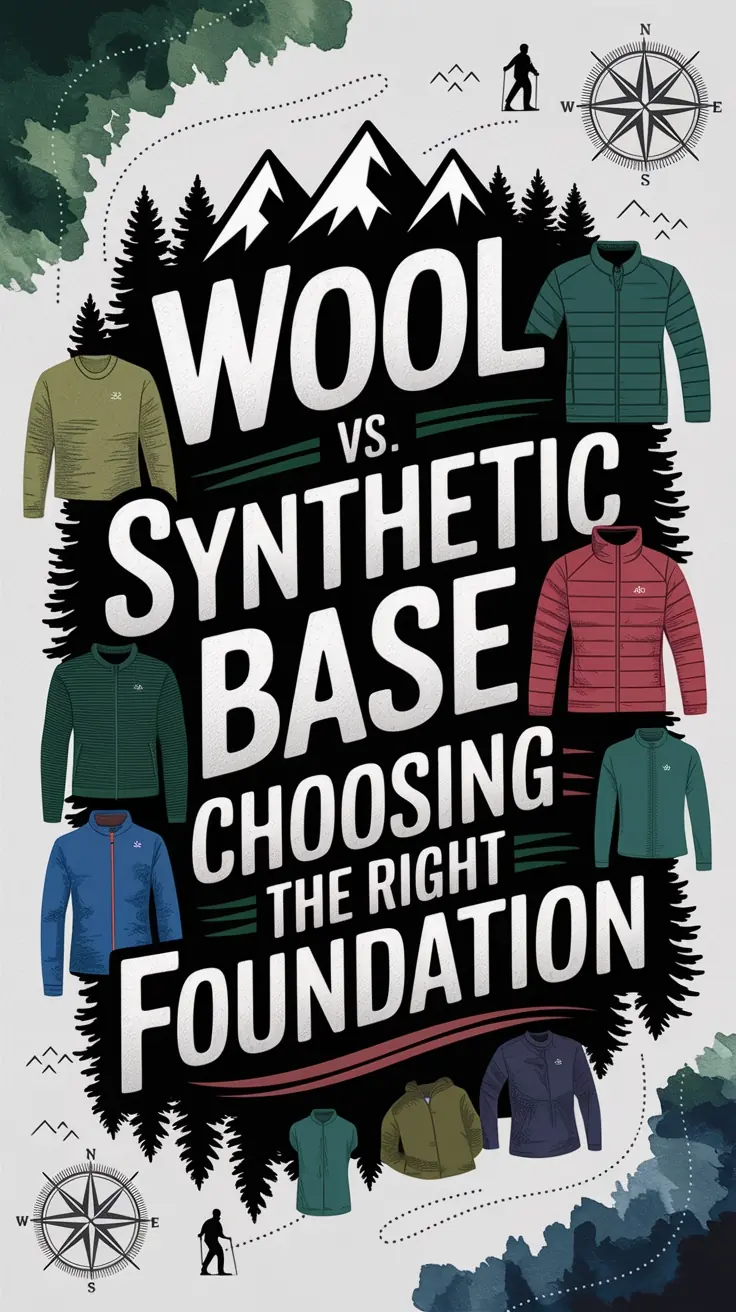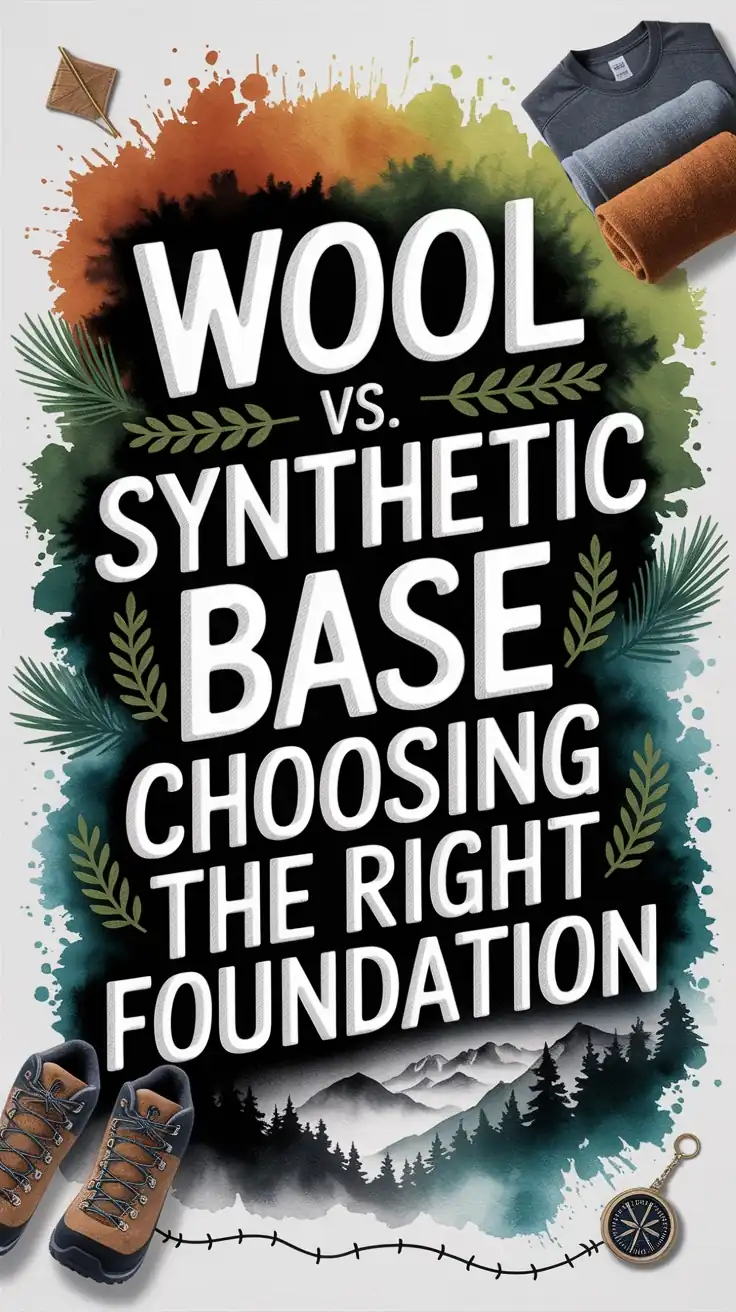Thru-hikers face an essential choice: merino wool or synthetic base layers. Wool excels in temperature regulation and odor control—perfect for variable conditions. Synthetics? More durable, faster-drying, and 30-40% more packable. Cotton is a disaster waiting to happen. Merino feels better in humidity but develops holes faster. Synthetics handle high-intensity efforts better but can stink after extended wear. Your choice depends on personal priorities: comfort, durability, weight, or environmental impact. The right foundation layer can make or break your 2,000-mile journey.
How Base Layers Impact Your Thru-Hiking Comfort

When your feet hit the trail for months on end, the humble base layer becomes your second skin. Not just a piece of fabric—it's your personal climate control system.
Base layers wick sweat away from your body, preventing that miserable clammy feeling against your skin. Goodbye hypothermia risk. Ever been chilled by your own sweat? Yeah, it sucks.
They're temperature regulators too. Trapping warm air when you need it, letting heat escape when you don't. Even when soaked (looking at you, wool), they still insulate.
The right base layer means no chafing. No bacteria build-up. No smelling like a locker room after three days without a shower. Avoid using cotton base layers as they retain moisture and dry slowly, potentially leading to dangerous heat loss.
Wind conditions can dramatically increase the importance of quality base layers as they help manage wind chill that rapidly carries heat away from your body.
Bottom line? Your entire layering system falls apart without this foundation. Choose poorly and pay the consequences.
Performance Comparison: Merino Vs Synthetic in Changing Trail Conditions
The great base layer debate rages on trails worldwide: merino vs. synthetic. Each performs differently when Mother Nature decides to throw a tantrum.
Merino wool shines in variable conditions. Gets wet? Still warm. Sweaty stop-and-go hiking? Comfortable. Multiple days without laundry? Doesn't stink. Literally.
Synthetics dominate high-intensity efforts. They dry 40% faster and wick sweat like it's their job—because it is. But wear one for two days straight? Your tent mates might stage an intervention.
Temperature fluctuations favor merino's adaptability. It handles humid conditions better too, while synthetics can feel suffocating when the mercury rises. Merino offers an impressive warmth-to-weight ratio that makes it ideal for minimalist backpackers concerned with pack weight. Transitioning between shady trails and exposed areas requires adaptive materials that can manage rapid temperature changes effectively.
The real difference? Merino keeps working when conditions go sideways. Synthetics excel when you're pushing hard and fast. Choose accordingly. The trail doesn't care about your preferences.
Long-Distance Durability: Will Your Base Layer Last the Entire Trail?

How many miles can a thru-hiker squeeze out of a single base layer? The answer isn't pretty. Synthetics win the durability contest, hands down.
Merino might feel luxurious at first, but those tiny holes will appear faster than mosquito bites in July. Backpack straps are merino's nemesis. The constant friction destroys shoulder areas while synthetic fibers keep trucking.
Smart hikers know the tricks: thicker wool (200+ g/m²) lasts longer, and those nylon-core merino blends are worth the extra cash. Despite durability concerns, merino offers superior comfort and warmth compared to synthetics for variable conditions on trail.
Let's face it—trail life is brutal on clothes. Synthetics wash easier and dry faster when you're desperate to clean that funk. Many thru-hikers appreciate that synthetics are machine washable for convenience during town stops. Merino requires babying.
Yeah, you can darn wool holes, but who carries a sewing kit? Not the ultralight crowd.
Packing Smart: Weight and Space Considerations for Multi-Month Hikes
Grams matter when you're lugging everything you own for 2,000+ miles.
Those lightweight synthetic base layers (as little as 85g) start looking mighty attractive compared to their merino counterparts, which weigh 20% more. Math isn't complicated here.
Space? Even more critical.
Synthetics compress 30-40% smaller than wool. That's extra room for snacks. Or whiskey. Your priorities.
The numbers don't lie.
Base layers take up 1-2 liters of precious pack volume—unless you're using packing cubes or vacuum bags, which can shrink your clothing footprint by up to 80%. Impressive.
Synthetic layers are also thinner, playing nicely in your 3-layer system.
When every millimeter counts, that 0.5-1mm difference adds up. Especially when you're carrying 2-3 base pieces total.
Expert thru-hikers always recommend adopting a minimalist approach to maximize efficiency and reduce unnecessary strain over long distances.
Aiming for a target base weight of around 15 pounds (7kg) means scrutinizing every item, including your base layers.
Environmental Footprint of Your Base Layer Choice on the Trail
While thru-hikers obsess over pack weight, the environmental burden of their gear choices often gets conveniently forgotten.
Truth is, both alternatives leave a mark.
Wool? Natural and biodegradable, sure. But those sheep burp methane like it's their job. Plus, all that land for grazing means less habitat for wildlife. Not exactly earth-friendly.
Synthetics aren't innocent either. Petroleum-based and shedding microplastics with every wash? Great. Just what our oceans needed - more plastic. They'll also stick around for centuries after you're done with them. Nature's forever roommate.
The real kicker? Synthetics need frequent washing but last longer. Wool requires fewer washing due to its natural antibacterial properties that prevent odor build-up. But wool wears out faster. Choose your poison.
Innovations help - recycled synthetics and organic wool exist. But let's not kid ourselves. There's no perfect choice. Choosing high-quality, durable options that support ethical manufacturing practices can help minimize your overall environmental impact.








